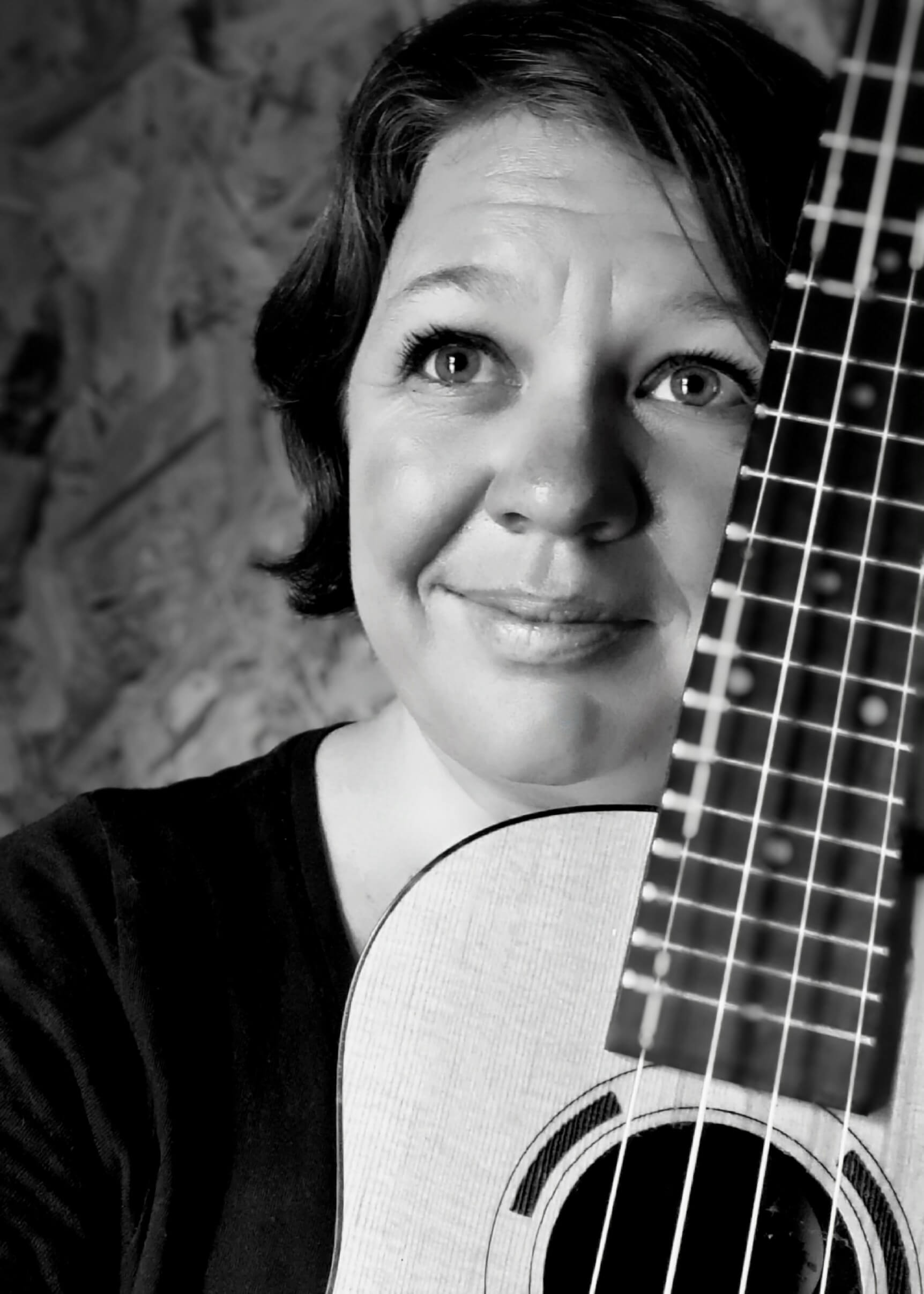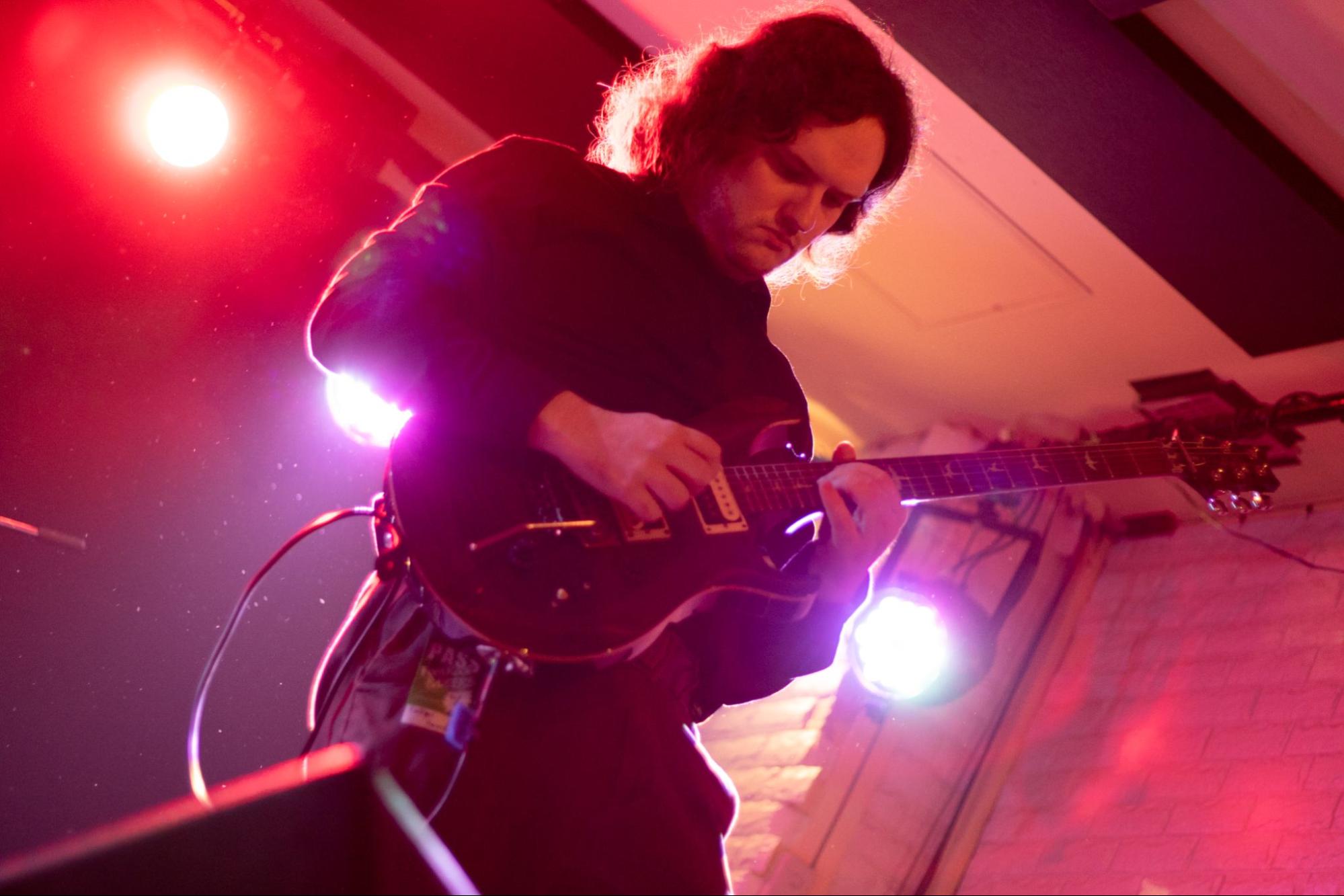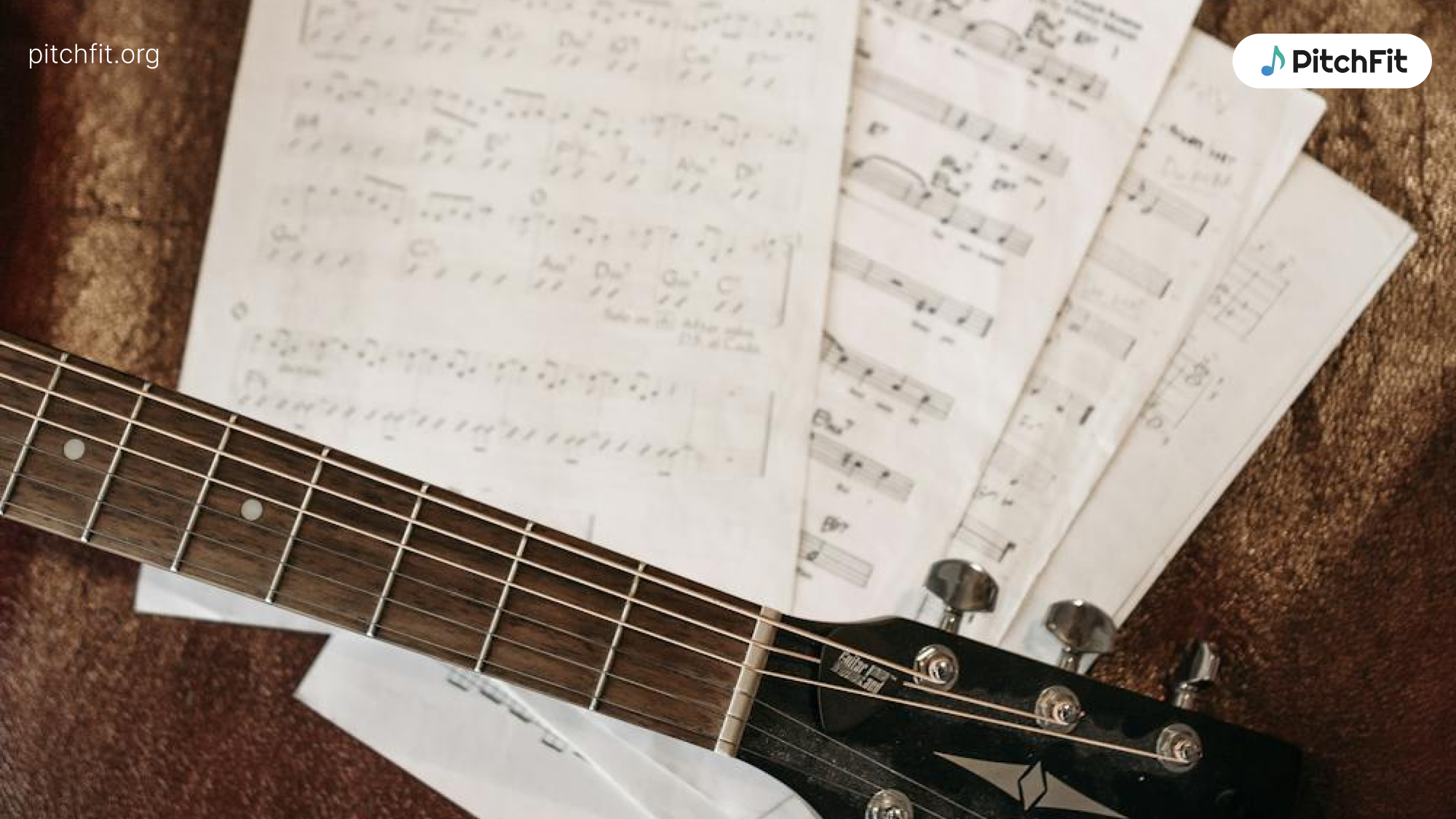Ah, the million-dollar question that every aspiring musician asks at some point: "How long does it take to train your ear?"
If you're reading this, chances are you're somewhere along this journey yourself, perhaps feeling a mix of excitement and frustration.
Well, grab your favorite beverage, get comfortable, and let's dive into this musical odyssey together.
The Short Answer: It's a Lifelong Journey
Let's start with the truth: ear training is not a destination. It's a journey… and a pretty long one. This journey leads to developing relative pitch and, sometimes, even perfect pitch.
While research shows ear training works, it’s more like learning a language: you start with the basics, gradually build your skills, and continue to refine and expand your abilities throughout your entire musical life.
Timelines are always useful though. So let’s have a little look at how we develop through these different stages.
PS: The times do vary of course, depending on your routines and practice schedule…but it’s a start!
The Stages of Ear Training: A Timeline
Stage 1: the basics (3-6 months)
In this initial stage, you're laying the foundation. You're learning to:
- Distinguish between high and low pitches
- Recognize basic intervals (like perfect fifths and octaves)
- Identify major and minor chords
For most people, getting comfortable with these basics takes about 3-6 months of consistent practice (let's say 15-30 minutes a day).
Some naturally gifted folks might breeze through this in a couple of months, while others might take up to a year.
Remember, everyone's journey is unique!
Stage 2: intermediate skills (6-12 months)
Now we're getting into the meat of ear training. At this stage, you're working on:
- Recognizing all intervals within an octave
- Identifying chord qualities (major, minor, diminished, augmented)
- Basic chord progression recognition
- Simple melodic dictation
This stage typically takes about 6-12 months of regular practice.
By the end of this stage, you might be able to play simple songs by ear or transcribe basic melodies.
Stage 3: advanced skills (1-2 years)
Things are getting serious now. You're delving into:
- Recognizing complex chord extensions
- Identifying modulations in music
- Advanced chord progression recognition
- Transcribing more complex melodies and harmonies
This stage often takes 1-2 years of dedicated practice.
By now, you're starting to feel like you have "musician's ears." You can probably learn songs by ear fairly quickly and might even be able to improvise over chord changes with some fluency.
Stage 4: professional level (3-5 years and beyond)
Welcome to the big leagues. At this stage, you're honing:
- Instant recognition of complex harmonic structures
- The ability to transcribe full songs or orchestral pieces
- Recognition of subtle timbral differences between instruments or mix elements
- Microtonal hearing (recognizing pitches that fall between the notes of the standard scale)
Reaching this level typically takes at least 3-5 years of serious study and practice.
Many professional musicians continue to develop these skills throughout their entire careers.
Factors That Influence Your Ear Training Journey
Now, before you start plotting these timeframes on your calendar, it’s important to understand that numerous factors can influence how quickly you progress in ear training.
While everyone’s journey is unique, certain elements can speed up or slow down your development.
Let’s take a closer look at these factors:
Natural ability
Yes, it’s true. Some people are born with a great aptitude or an ‘ear’ for music. They may find it easier to recognize pitches, intervals, or melodies right from the start.
However, don’t let this discourage you. While natural ability might give someone a head start, it’s dedicated practice that determines long-term success.
Musicians without an innate sense of pitch can still develop strong ears through regular, focused practice.
Remember, ear training is a skill, and like any skill, it can be learned and refined with time and effort. So don’t worry if you don’t feel like a “natural”...your dedication will make the difference.
Musical background
If you grew up in a musical household or started playing an instrument at a young age, chances are your ear is already more developed.
Constant exposure to music from a young age helps train your brain to recognize and interpret sounds more quickly. For example, if you grew up around parents who played piano or listened to music regularly, you likely absorbed musical structures and patterns without even realizing it.
While a musical background can give you an advantage, it’s not a requirement for success. Even if you’ve only recently started your musical journey, consistent ear training will get you where you want to go.
Listening to music you enjoy will help you with this training too, as you start to hear the theory that you are learning and practicing in songs you listen to for fun.
Practice consistency
One of the most critical factors in your ear training journey is how consistently you practice. Daily practice, even if it’s just for 10-15 minutes, will yield far better results than long, sporadic cram sessions.
The key is to make ear training a habit, i.e. something you do regularly. This consistent exposure helps your brain adapt to recognizing intervals, chords, and melodies faster. Much like learning a new language, short, frequent sessions reinforce neural pathways, making the skill more ingrained.
So even on busy days, try to fit in a few minutes of ear training. Building into an existing daily habit can help (ie: before brushing your teeth, whilst taking a moment to have a morning coffee, using headphones to practice on your daily commute etc). It will add up over time.
Practice quality
It’s not just about how often you practice, but also how you practice. Mindless repetition won’t get you far. Instead, focus on deliberate practice, meaning you should aim to actively engage with the exercises and challenge yourself.
For example, if you’re working on interval recognition, don’t just guess until you get it right. Take time to listen carefully, compare the intervals, and try to internalize the differences.
A focused 15-minute session where you pay attention to each sound will be much more effective than an hour of distracted, aimless practice. High-quality practice leads to faster progress.
As Vince Lombardi says, ‘Practice does not make perfect. Perfect practice makes perfect.’
Musical exposure
The more music you’re exposed to, the more your ear will develop. Listening to a diverse range of genres and styles can significantly boost your ear training progress. If you only listen to one genre, like pop or classical, your ear might become too accustomed to the familiar patterns within that style.
Expanding your listening habits to include jazz, rock, folk, electronic, and even music from different cultures helps broaden your ear’s sensitivity to new harmonies, rhythms, and melodies. The more variety your brain is exposed to, the better it becomes at picking out musical patterns and structures across different styles.
For fun, why not look at some groups doing covers of your favorite songs in a different genre? There are amazing musicians uploading all kinds of covers onto Youtube and their social media accounts. These can be for fun, or use them as an opportunity to do some close listening and try to articulate the differences you hear with the musical language you are learning through ear training.
Instrument choice
The instrument you play can also influence the speed of your ear training progress. Instruments that require constant pitch adjustment can accelerate ear development because they demand precise listening.
For instance:
Fretless string instruments like the violin or cello force you to fine-tune each note manually, which helps develop pitch accuracy.
Wind instruments like the trombone require careful listening to stay in tune since there are no fixed positions for each note.
The human voice (singing) is one of the best tools for ear training because it requires you to match pitches directly, improving your pitch recognition and musical intuition.
If you play an instrument like the piano, where notes are fixed, you can still improve your ear by singing or experimenting with other instruments that challenge your pitch awareness.
Learning method
The way you approach ear training matters. Finding an ear training method that works for you can significantly speed up your progress.
Some musicians prefer to use apps like EarMaster or Tenuto, which offer structured exercises for recognizing intervals, chords, chord progressions, and melodies. Some of these apps can also support functional ear training, helping you understand how notes and chords relate to a tonal center.
Others might prefer more organic methods, like learning songs by ear or practicing along with recordings. Choosing a ‘challenge piece’ and then breaking down the elements needed to be able to play this piece may also work for you.
Experiment with different methods and tools until you find the approach that feels intuitive and enjoyable. A method that resonates with you will make ear training feel less like a chore and more like an exciting part of your musical growth.
Real Talk: The Ups and Downs of Ear Training
Now that we've covered the stages and factors, let's get real for a moment. The ear training journey is not a smooth, steady upward climb. It's more like a roller coaster with thrilling highs and occasional dips.
There will be days when you feel like a musical genius, effortlessly picking out chord progressions in your favorite songs. And there will be days when you feel like you've made no progress at all, struggling to identify intervals you thought you'd mastered months ago.
This is normal. In fact, it's a crucial part of the learning process. Those moments of struggle are often when your brain is working hardest, forming new neural connections that will ultimately make you a better musician.
Training Your Ear Without Knowing Note Names
Here are some practical ways to train your ear without relying on note names:
Relative pitch
One of the most powerful tools for ear training is focusing on the relationship between notes, rather than their absolute names. This is the foundation of most ear training. Instead of thinking of specific notes like C or G, think about how they relate to each other. Is the second note higher or lower? Does it sound closer (like a step) or further away (like a leap)?
Recognizing these relationships builds a strong sense of relative pitch, which is essential for musicianship. Over time, you’ll instinctively know how notes fit together, without needing to name them.
Interval recognition
Intervals are simply the distance between two notes, and learning to recognize them by ear is key to understanding melodies and harmonies. You don’t need to know the specific notes to identify intervals like a perfect fifth or major third. Instead, focus on how each interval feels and sounds. For example, a perfect fifth may remind you of the opening notes of the "Star Wars" theme, while a major third might bring to mind a familiar major chord.
By practicing interval recognition, you’ll develop a sharper sense of musical distance, making it easier to follow and recreate melodies without needing to name the exact notes. You can read more about interval training here.
Scale degree training
Rather than thinking of specific note names, start thinking in terms of scale degrees—the position of each note within a scale. For example, in a major scale, the first note is the tonic (1st scale degree), the second note is the supertonic (2nd scale degree), and so on.
This method allows you to hear and understand music in a more functional way, as each degree has a unique sound and role within the scale. When you train your ear to recognize scale degrees, you can identify melodies based on their position in the scale rather than the specific pitches, making it easier to recognize patterns across different keys.
Chord quality recognition
Chord recognition is an essential part of ear training, but you don’t need to know the note names to tell whether a chord is major, minor, diminished, or augmented. Focus on how the chord feels. Major chords tend to sound bright and happy, while minor chords sound more melancholic or serious. Diminished chords create tension, while augmented chords add a sense of mystery.
By training your ear to hear these emotional cues, you can identify chord types and qualities without relying on note names.
Melodic contour
Instead of focusing on specific pitches, listen to the shape of a melody, or its contour. Does the melody rise or fall? Does it move in big leaps or small steps? Focusing on the general direction of the melody helps you recognize and remember it, even without knowing the note names.
This is particularly useful when transcribing music by ear. Capturing the overall shape of a melody is often the first step in recreating it accurately.
Active listening
Developing your ear is about being more attentive to the music you hear daily. When you listen to your favorite songs, try to pick out individual instruments, vocal harmonies, or chord progressions. Can you isolate the bass line? Can you hear where the guitar shifts chords?
Active listening helps you engage with music on a deeper level, training your ear to recognize various elements of a song without needing formal theory or note names.
Make it a habit to actively listen, whether it’s pop, jazz, classical, or any genre that inspires you.
Sing along
Even if you don’t consider yourself a singer, singing along to music you’re listening to is a great way to internalize sounds.
Try matching the pitches and melodies by ear. You don’t need to know the note names; simply focus on reproducing what you hear.
Singing reinforces your pitch memory and helps strengthen the connection between your ear and your voice, which ultimately enhances your overall musicianship.
Play by ear
One of the most rewarding ways to train your ear is to play by ear. Start by attempting to recreate simple melodies and songs on your instrument without looking at sheet music or tabs.
Focus on finding the notes and chords that match what you hear. This process might feel slow at first, but the more you practice, the more intuitive it becomes.
Playing by ear helps you develop a natural understanding of music, allowing you to rely less on theory and more on instinct.
Remember, while knowing note names and music theory can certainly help, they are not required to develop a strong ear for music. Many great musicians throughout history had excellent ears without formal music education. The most important thing is to listen actively and practice regularly.
Tips for Your Ear Training Journey
Ear training is a gradual process, and no two journeys are the same. Based on experience and conversations with musicians across various instruments, here are some key tips to guide you along the way:
Be consistent
Consistency is key when it comes to ear training. Just like learning an instrument, a little bit of practice every day will get you much further than cramming once a week.
Try dedicating 15-30 minutes daily to your ear training exercises. You’ll find that regular, focused practice helps solidify your progress much more effectively than sporadic, long sessions.
Use a variety of methods
Don’t limit yourself to just one form of ear training. There are many approaches, from using apps like EarMaster and Tenuto to active listening and playing by ear. Mix up your practice routine by incorporating different exercises – identify intervals one day, recognize chords the next, or transcribe a melody from a favorite song.
Using varied methods will keep things fresh and challenge different aspects of your ear. These can range in formality too, combining a daily routine of targeted training with ‘tuning in’ to the music you’re overhearing at the supermarket and then trying to identify one element you have been practicing can accelerate your journey too!
Apply what you learn in real-life situations
One of the best ways to solidify your ear training skills is to apply them to your actual music-making. Whether you’re playing an instrument, singing, or composing, try using your developing ear in the moment.
When you’re jamming with friends or learning a new song, rely on your ear to guide you rather than sheet music or tabs.
The more you use these skills in real contexts, the faster they’ll improve.
Be patient with yourself
Remember, ear training is a journey, not a race. It’s easy to get frustrated when you’re struggling to recognize a tricky interval or chord progression, but don’t let that discourage you.
Progress can sometimes feel slow, but every small step forward is a victory. Celebrate those moments! Whether it’s finally recognizing a perfect fifth or playing your first song by ear.
Listen actively to music
Listening is as important as playing. Develop the habit of active listening whenever you hear music. Try to pick out specific intervals, chord progressions, or individual instruments.
Over time, this will train your ear to recognize familiar patterns and harmonic structures without even thinking about it.
Whether it’s a pop song on the radio or a complex jazz tune, make a conscious effort to decode the music you hear.
Sing or hum what you hear
Regardless of your main instrument, singing or humming what you hear is one of the best ways to internalize pitches and intervals. This connects your ear to your voice, making it easier to recognize intervals and melodies.
Even if you’re not a singer, give it a try! It’s a powerful way to reinforce what you’re learning.
Practice with others
Ear training can be more effective – and more fun – when done with others. Join a practice group, attend jam sessions, or simply sit down with another musician and trade ear training exercises.
Practicing in a group helps you stay motivated and exposes you to different ways of hearing and interpreting music.
Don’t neglect music theory
While you don’t need to be a theory expert to train your ear, having a basic understanding of music theory can make sense of what you're hearing. Concepts like intervals, scales, and chord progressions all tie into ear training.
If you’re interested, learning some theory along the way can enhance your understanding and help you recognize what you’re hearing faster.
Record your progress
Keeping a practice journal or recording your ear training sessions is a great way to track your progress. Write down the intervals or chords you’re working on, and note any breakthroughs or challenges.
You’ll be able to look back over time and see how far you’ve come, which can be really motivating, especially during periods when progress feels slow.
Stay curious
Above all, maintain a sense of curiosity. Ear training is about discovery of new sounds, patterns, relationships in music, etc.
Keep your mind open to new genres, styles, and musical concepts. The more you expose yourself to different kinds of music, the more your ear will develop. Allow your curiosity to drive you to explore deeper and find joy in every new musical revelation.
The Never-Ending Symphony
So, how long does it take to train your ear? The true answer is: as long as you're making music. Your ear will continue to develop throughout your entire musical life. Each new piece you learn, each jam session you participate in, each new genre you explore – all of these experiences contribute to your ear training.
The beautiful thing about music is that there's always more to hear, more to understand, more to feel. Your trained ear is your key to unlocking these endless musical treasures.
Remember, the goal isn't to reach some final level of "perfect" ear training. The goal is to continually expand your musical perception, to hear more deeply, to understand more fully, and to connect more profoundly with the music you love.
So don't get too hung up on the timeline. Instead, enjoy the journey. Revel in each new discovery. Celebrate each moment when you hear something you couldn't before. Because in the end, that's what music is all about – the joy of listening, learning, and growing.
Now, if you'll excuse me, I just overheard a great tune that I need to go find out the name of, so I can look it up and learn to play it! Happy listening, and may your ear training journey be filled with beautiful sounds and exciting discoveries!





